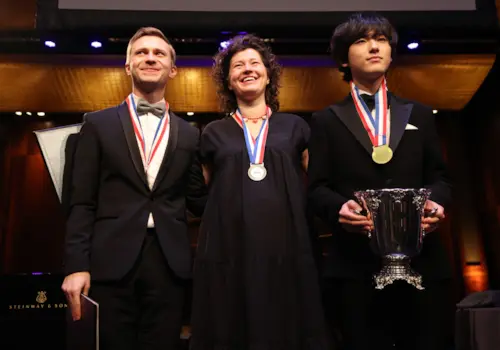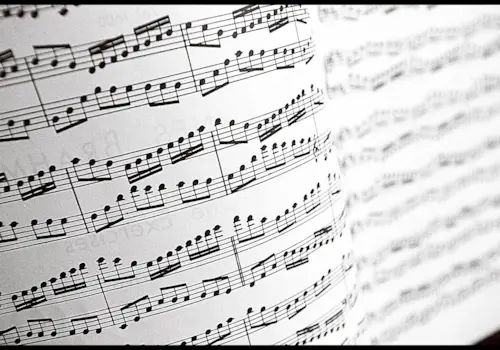08 April 2025
|
As a run up to her 'Ravel in the Forest' recital in London on 10 April, Belle Chen talks about her favourite nature-inspired pieces for all levels of pianists to try
Jean Sibelius: The Spruce (Granen)
Composed in 1914, ‘The Spruce’ is one of my all-time favourite piano works about trees. In fact, the Op 75 suite from which this piece is from, is called The Trees. I first heard the piece during my university years, beautifully performed by my friend Swiss pianist Olivia Geiser, and it has stuck with me ever since. In Sibelius’s writing, there is a beautiful sense of space. There are moments of dignified stillness, sweetness, and reflection, drawing the listener in, before the beautiful sweeping passages that evoke the feeling of bristle sound of the leaves and branches with a gentle wind.
Edvard Grieg: Butterfly (Sommerfugl) Op 43 No 1
An exquisitely playful piece by the Norwegian composer famed for his 66 Lyric Pieces. The airiness and lightness of the butterfly’s movement can be felt like a breath of fresh air. For me, this piece evokes the feeling of weight being lifted from the shoulders. It is short, too, capturing a brief moment that may be quickly missed.
Samuel Coleridge-Taylor: Forest Scenes Op 66
Samuel Coleridge-Taylor’s Forest Scenes takes a fascinating narrative angle into evoking scenes in the forest. Composed in 1907, I love the mixture of musical elements stemming from various genres that come through harmonies, melodies, and rhythmic motifs. Wake Hasegawa plays them beautifully.
Robert Schumann: The Prophet Bird (Vogel als Prophet)
Forest Scenes (Waldszenen) Op 82 is a set of nine short pieces for solo piano composed between 1848-1849. It was Schumann’s last major cycle for solo piano. Listen to Penelope Crawford’s special performance of The Prophet Bird (No 7), where the chirps and birdsong sound especially surreal on the 1835 Conrad Graf. [The piece appeared inside issue 135, with a lesson by Cordelia Williams.]
Miriam Hyde: Woodland Sketch
A charming piece by Australian composer Miriam Hyde. In the composer’s introduction to the piece, she speaks of a ‘windy day, and leaves from the tall trees were whirling about in the dust’. At times playful, at times lyrical; personally for me, there is also a slight hue of sadness towards the end.
Franz Liszt: Waldesrauschen (Forest murmurs)
The sparkling ‘Waldesrauschen’ is the first from Liszt’s Two Concert Etudes S 145, written in Rome around 1862-63. Whenever I listen to this piece, I can feel the wind sweeping through the forest, and the shimmer of the sun beaming through the leaves and branches. There is also a sense of unfolding drama, brought by the chromatic octave passages and cadenza-like lines at the climatic section of the piece, before we return to the calm of the forest in the end.
Ryuichi Sakamoto: A Flower is Not a Flower
This is a beautiful and spacious piece by the late Japanese composer Ryuichi Sakamoto. He is an artist whom I admire so much, his music often evokes the deeper and often unspoken layers of humanity in a very genuine and humane way. His work crosses multiple genres and styles, morphing at each stage of his life and career. In A Flower Is Not a Flower, jazz-leaning harmonies are momentarily disrupted by a strange evocative moment reminiscent of 20th century avant-garde in a Classical realm. Although not directly inspired by the forests, this piece conjures up thoughts about transient nature of existence, and the feeling of being deep-in-thought whilst observing nature.
Hauschka: Skating Through the Woods
Moving into the post-Classical space, ‘Skating Through the Woods’ by German composer and pianist Volker Bertelsmann offers a rewarding listen. The piece builds subtly, and towards the end of the piece the cinematic scope of the icy scenery reveals itself.
Maurice Ravel: Oiseaux Tristes, No 2 from Miroirs
‘Oiseaux Tristes’ (Sad Birds) is an evocative piece by French Impressionist composer. It is the second movement of his suite Miroirs, written between 1904-1905. The piece conjures up various layers of textures from the single instrument in a simple yet melancholic way; this approach to writing for piano is something I’ve always admired when listening to Ravel. Ravel described ‘Oiseaux Tristes’ as ‘birds lost in the torpor of a dark forest during the hottest summer hours’. Its melodic motif is the springboard upon which ‘Three Birds’ from my new album Ravel In The Forest evolved and came to life.
Belle Chen appears at Kings Place this Thursday 10 April.
© Matthew Johnson







